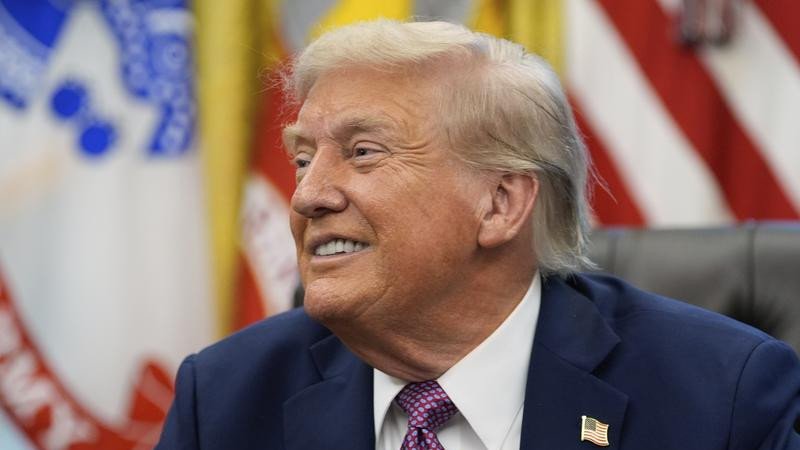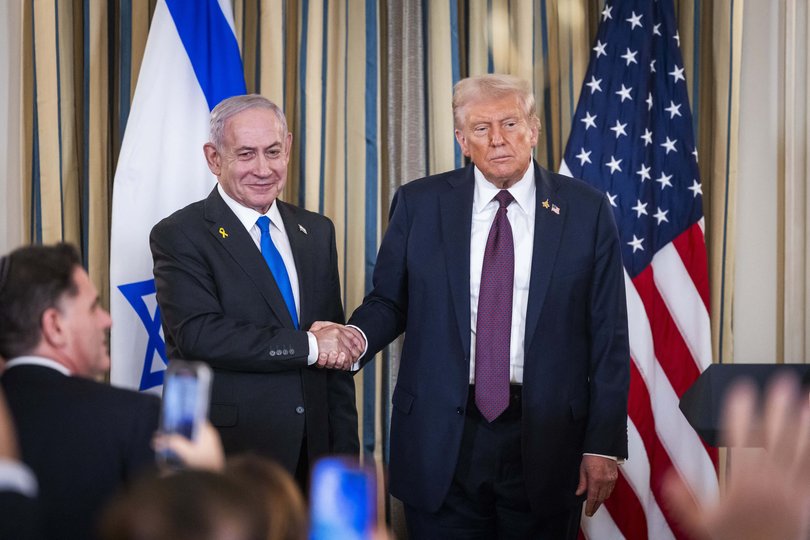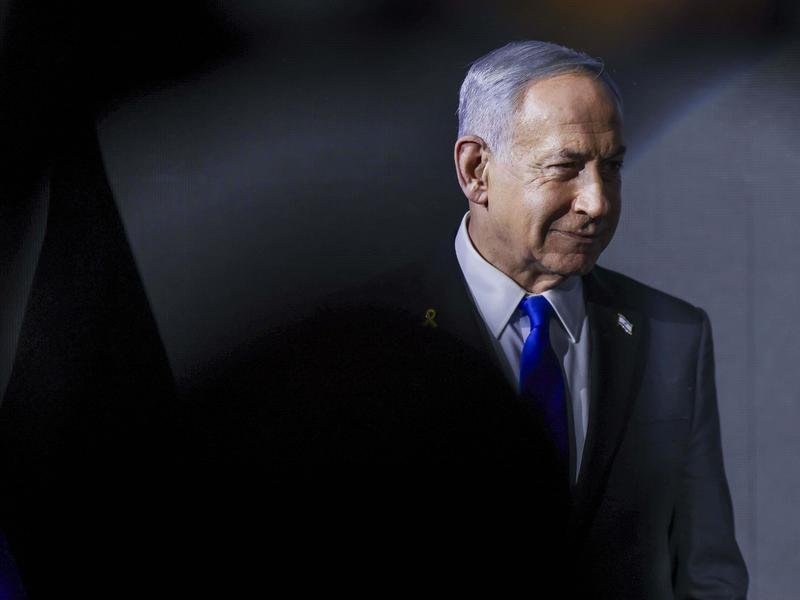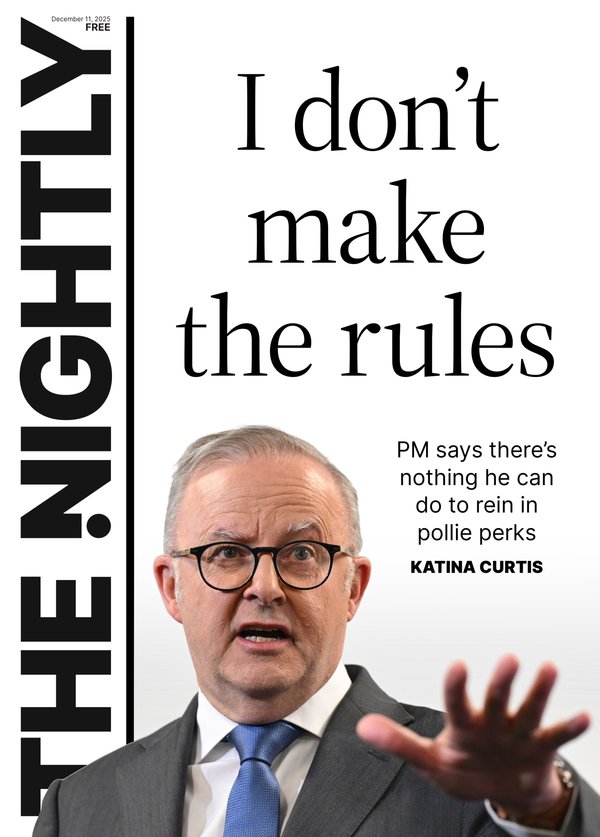A euphoric Donald Trump wins a breakthrough in the Middle East

Two years after Hamas’s atrocities of October 7th 2023, the negotiations in Sharm el-Sheikh are on the cusp of delivering a ceasefire in Gaza and ending a war that has killed over 60,000 Palestinians, most of them civilians.
Late on October 8th President Donald Trump wrote on social media: “I am very proud to announce that Israel and Hamas have both signed off on the first phase of our peace plan.” Hamas, Israel and Qatar confirmed the deal.
Representatives from Israel and Hamas had been holed up on different floors of a hotel in the Egyptian Red Sea resort, with negotiators from America, Egypt, Qatar and Turkey there to apply pressure. It took three days to hammer out this first stage of a deal.
Sign up to The Nightly's newsletters.
Get the first look at the digital newspaper, curated daily stories and breaking headlines delivered to your inbox.
By continuing you agree to our Terms and Privacy Policy.While the precise details are not yet public it is likely to lead to Hamas releasing the remaining 20-odd Israeli hostages who are still alive, a parallel release of a large number of convicted Palestinian prisoners by Israel, a flood of aid, and a partial pullback by the Israel Defence Forces from Gaza’s main cities, to what Mr Trump called “an agreed upon line”.
Given the excruciating difficulty of reaching agreement on just this, it is easy to be sceptical about a second phase now taking hold. This would create a technocratic government that rebuilds Gaza while excluding Hamas from power. Hamas would be disarmed and security provided by an international force.
An oversight board would be created that Mr Trump is set to chair. The ultimate objective, what Mr Trump called “a strong, durable and everlasting peace” between Israel and all the Palestinian territories, including the possibility of a two-state solution, seems more daunting still.
Yet a narrow opportunity has opened up. Around the world public focus on the conflict is greater than at any point since the talks that led to the Oslo accords in 1993 and 1995.
In Donald Trump, America has a president who is unafraid to push Israel hard.

The humbling of Iran’s regime and its violent proxies has removed a threat to the entire region. And the willingness of the Gulf Arab states not only to pay for Gaza’s reconstruction, but also to underwrite a peace process and, potentially, help provide security, is a huge step forward from the 1990s.
Yet even as the diplomatic backdrop has improved, public opinion among both Israelis and Palestinians has become more cynical and hostile towards any peace process. Thirty years on from Oslo, and after October 7th, most Israeli Jews see the Palestinian territories as a failed quasi-state with a record of incubating endless terrorism and hatred of Jews.
In 2012 61 per cent of Israelis supported two states. Now perhaps a quarter do and there is a chilling indifference to the loss of Palestinian life. Palestinians see Israel as a rogue state committed to occupying ever more of their land and unleashing routine and high-tech violence on civilians. A staggering proportion are radicalised: polled in May, 50 per cent supported the October 7th attacks, 87 per cent denied Hamas committed atrocities and 41 per cent supported armed resistance.
Mr Trump has said he may travel to the Middle East to mark the first phase of the peace deal. Assuming the hostage release and ceasefire take place, attention will turn to the next phase of any talks: the creation of a new system of governance for Gaza.
The end of the war could also trigger a change of leadership on both sides, with Hamas being persuaded or forced to relinquish any formal role in Gaza’s government.
Israel must hold an election within 12 months which polls suggest could result in the Prime Minister, Benjamin Netanyahu, leaving office.

These changes at the top are necessary but not sufficient. It is rash to imagine that a deeper peace process can take place without a shift in public opinion on both sides. That is what would make peace possible, not handshakes in the Oval Office or Nobel prizes. Fortunately, the changed backdrop helps.
Having pressed Israel to end its air campaign against Iran and strike a hostage deal, Mr Trump must redouble efforts to force Mr Netanyahu or his successor to curb the expansion of Jewish settlements. He must also bolster Palestinian governance by stopping Israel from depriving the Palestinians of customs revenue and facilitating vigilante violence by settlers and soldiers.
The Arab states, meanwhile, must get real about forcing the Palestinian Authority to deliver accountable governance and Palestinian political parties to find new leaders and eschew violence. As well as pressure on both sides, there is a positive vision to sell.
For Israelis this is the prospect of a regional security order that makes Israel safer by deepening co-operation with Arab states and forging new links with Syria, and perhaps Lebanon, both of which have escaped Iran’s grip. For Palestinians it is the prospect of economic links with the Gulf creating a new pathway to trade and prosperity.
If the hostages are released, Palestinians everywhere will watch to see if Israel can sincerely commit itself to allowing a technocratic government in the strip to emerge with international backing. For their part, Israelis will be watching to see if the Palestinians in Gaza can govern themselves better, dismantling terrorist infrastructure and reforming the institutions Hamas captured.
The public on both sides will be eyeing how committed Mr Trump really is.
In the Oslo talks Gaza was of secondary importance. After a horrific and intractable conflict, what happens next in Gaza will be the acid test.
